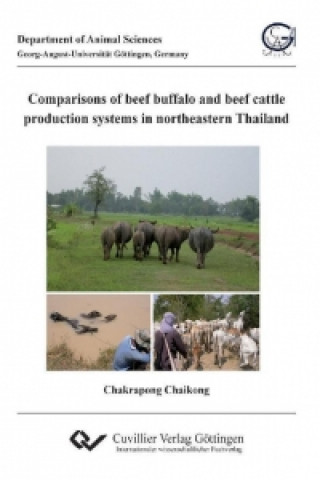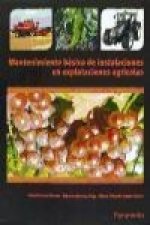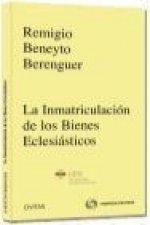
Доставка
Наръчник за пазаруване





Не ви допада? Няма проблеми! При нас имате възможност за връщане в рамките на 30 дни
 Подаръчен ваучер
на всякаква стойност
Подаръчен ваучер
на всякаква стойност
Няма да сбъркате с подаръчен ваучер. Получателят може да избере нещо от нашия асортимент с подаръчен ваучер.
Comparisons of beef buffalo and beef cattle production systems in northeastern Thailand
 Английски език
Английски език
 73 b
73 b
30 дни за връщане на стоката
Може би ще Ви заинтересува


The goal of this study was to compare production systems and potential for further developmentof beef buffalo and beef cattle farms in northeastern Thailand aiming at an improvement ofproduction and as a consequence of farmers' livelihoods. The specific objectives were:1. to better understand and re-examine characteristics of the livestock farms and reasons forkeeping livestock,2. to assess socio-economic and livelihood benefits of the livestock for the farmers,3. to investigate the livestock husbandry including farm management, feeding and breedingpractices,4. to explore farmers' perceptions of favourable traits of buffaloes and cattle and reasons forthe decline of the buffalo population,5. to investigate social and environmental impacts as well as problems and needs of thelivestock farming according to the farmers' point of view.The following hypotheses were tested to achieve the objectives of the study:1. Characteristics of livestock farming and reasons for keeping livestock differ between beefbuffalo and beef cattle farms and between herd sizes.2. Differences between beef buffalo and beef cattle farms and between herd sizes have aneffect on socio-economics and livelihoods of the farmers.3. There are differences in farm management, feeding management and breeding practicesbetween beef buffalo and beef cattle farms and between herd sizes.4. Beef buffalo farms have a lower level of farm inputs and a higher potential for improvingthe production.5. Community and environmental conflicts are caused by livestock farming depending onanimal species and herd size.This study was conducted in the province of the Nakhon Ratchasima, located in the lower part ofnortheastern Thailand (as shown in Figure 3.1, in Chapter 3). The multi-state sampling methodwas used to choose the farms based on the livestock production census in 2006 obtained from theNakhonratchasima Provincial Livestock Office, Department of Livestock Development. Based onthis data, 121 beef buffalo and beef cattle farms, respectively, were selected randomly. BetweenOctober 2007 and May 2008, a single-visit, multiple-subject survey was carried out using faceto-face interviews. The recall, observation and measurement method was used to complete a pretested,semi-structured questionnaire. The opinions and views of the farmers were gathered byopen-ended questions. Questionnaires included farm characteristics, importance of livestock,socio-economic benefits of the animals, feed resources, feeding management, herd structures andbreeding practices, favourable traits of buffalo and cattle, reasons for the decline of the buffalopopulation as well as constraints and needs for the development of livestock farming. All datawere statistically analyzed to describe the livestock farming systems and to compare beef buffaloand beef cattle farms and sizes of herds.Characteristics of beef buffalo and beef cattle farming as well as the roles and the socio-economicbenefits of the livestock to the keepers are presented in Chapter 4. Most of the farms wereintegrated crop-livestock systems with small farm size (7.9 ha), whereof less than half of the areawas used for livestock. Farm activities were mainly done by family members while employeeswere only found on large farms. The most important reason for keeping animals was incomegeneration (80 % of all responses). This could be classified into accumulation of wealth orsavings (22 %), covering expected (19 %) and unexpected (19 %) expenses, and regular (11 %)and additional (9 %) sources of cash income. Besides this, improvement of the social status wasmentioned (18 %). Only 2 % of the farmers kept the animals for draught power, inherited asset,manure source and conservation aspect. Most of planned and unplanned expenses of householdsduring the last 5 years were covered by selling livestock (58 %) and other agricultural products(19 %). The more animals the farmers kept the better the dwelling conditions, the larger thenumber of household assets and the more access to commercial health insurances the farmershad. The results confirm the important roles of buffaloes and cattle in the livelihood strategies ofrural households.Chapter 5 presents feed resources for beef buffaloes and beef cattle throughout the year andfeeding management of the livestock farms. Most of the livestock farms (94 %) practiced aherding system while tethering was used only by smallholders. The animals were kept on smallpasture areas (3.1 ha) with very low pasture allowance (0.1 ha TLU-1, TLU = Tropical LivestockUnits). During rainy season feed was obtained mostly from communal grasslands while harvestedcrop fields, shared by the community, became the most important source of feed during dryseason. Therefore, major limitations of feed supply were low quantity and quality because oflimited resources, variation of cropping patterns and seasonal fluctuations. Due to the lack oflands, low investment in pasture cultivation and seasonal limitations, farmers were not able tooffer green forages to their animals throughout the year. Crop residues were used to fulfilanimals' requirements during feed shortage or throughout the year. Because of high cost and lowavailability, farmers rarely practiced feed supplementation even though breeding animals weregiven the highest priority for supplementation. An extensive feeding system is mainly practicedon resource-poor farms, especially buffalo farms. The risk of feed deficiency is increasing ifmore animals are kept.Herd structures, breed compositions and breeding systems of beef buffalo and beef cattle farmsare reported in Chapter 6. The herd size in this study area was on average 39 buffaloes and 42cattle per farm with a high variation. The size of herd had slightly increased over the previousyears. Animals born within the herd were important sources of replacing buffaloes, indicating ahigh risk of inbreeding, while beef cattle farms imported animals from off-farm resources.Artificial insemination (AI) was not practiced for buffaloes while beef cattle farms adopted bothnatural and AI services. Damage of female's reproductive tract (38 % of responses) was stated asthe most important problem of AI. Lack of semen was stated by buffalo farmers as a limitation ofAI. Traits related to beef production were stated as high priority for buffalo selection, while cattlefarmers preferred an attractive appearance. Thai swamp buffaloes, which are superior in beefproduction traits, comprised up to 91 % of the buffalo herd. On the contrary, crossbreds of nativecattle and Brahman, and of native, Brahman and Indo-Brazilian cattle (88 % of the herd), havinga more attractive appearance, predominated over the pure Thai native cattle breed (5 % of theherd). Native breeding bulls were not included in breeding programmes of cattle, which mayresult in the loss of genetic resources of local cattle in this area.In Chapter 7, competitiveness of beef buffaloes and beef cattle, influences of animal farming onlocal community and environment, constraints and needs stated by the farmers, and reasons forthe decline of buffalo farming are described. Buffaloes impressed the farmers by their higheradaptation and productivity under extensive management as well as their superior beefproduction potential, fertility and longevity. However, the lack of water resources for wallowingwas addressed as the most important reason for the decrease of buffalo farming (63 % offarmers). Due to a possible cause of water contamination and community conflicts, buffaloessometimes were not allowed to enter public or private water resources. Deficiency of feed andwater from communal resources (61 % of farmers) and the need to access more of these resources(43 % of farmers), particularly by large-scale farmers, were mentioned as the main constraints oflivestock farming. Livestock services, marketing and prices also need to be improved by theauthorities when a market-oriented farming system is emerging. A high competitive use of thecommunal properties, particularly by large-scale farms, sometimes caused social conflicts andenvironmental harms. However, livestock was regarded to improve soils and the local ecosystem.Beef buffaloes and beef cattle can cope with the economic needs of the households as well asimprove farmers' socio-economic status and livelihoods substantially. As market-orientedproduction systems are becoming more important than subsistent systems, livestock husbandry,government services and livestock marketing need to be developed in order to improve theproductivity of livestock farming and consequently farmers' livelihoods. As regarding their highpotential for beef production, effective water management strategies should be deliberatelyconsidered to alleviate the drastic decline of the buffalo population and to promote beef buffalofarm enterprises. Furthermore, community and environmental antagonists related to livestockfarming need to be taken into account in the policies and promotions.
Информация за книгата
 Английски език
Английски език


 Контакт
Контакт Как се пазарува?
Как се пазарува?





























